Every animal has a different name and comes in different shapes and sizes. Some animals’ names sound bizarre but describe their habits, environment, or appearance.
For example, the Satanic Leaf-Tailed Gecko gets its name because its eyes look like a little devil, and its tail is shaped like a leaf.
But do you know some animals with long names? Several animals have long names that may be difficult to pronounce. Some of them are pretty amazing creatures.
Today, we will look at 20+ animals with long names and see how their names reflect their appearance or habits.
So, if you’re curious about which animal has the longest name or want to see some pictures of adorable animals with long names, keep reading!
20+ Animals With The Longest Names with Their Pictures
Here is a list of 21 animals with the longest names:
Black-Crowned Central American Squirrel Monkey
Scientific Name: Saimiri oerstedii
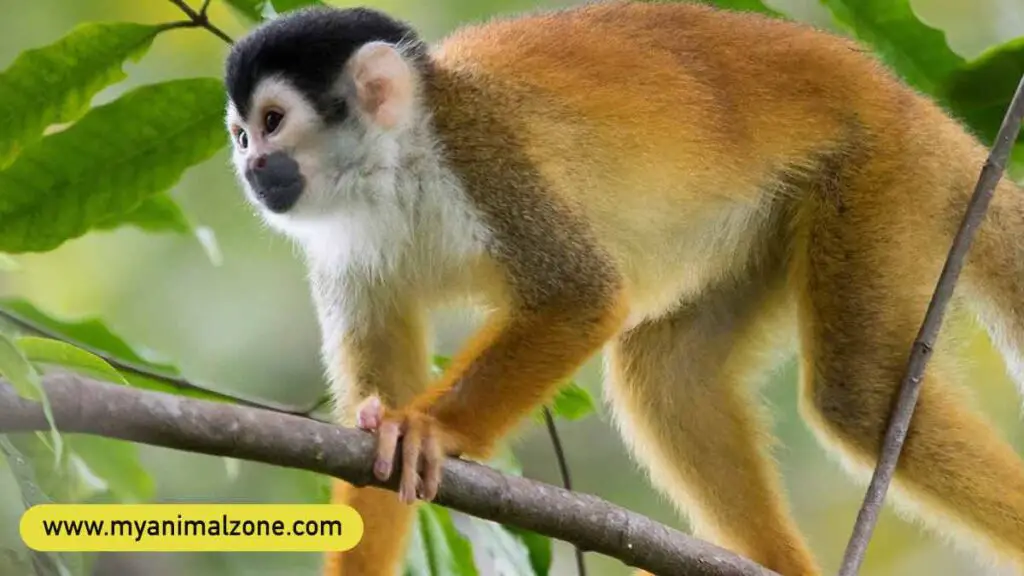
This animal is the longest animal common name on our list. The black-crowned Central American squirrel monkey is a subspecies of squirrel monkey that gets its name from the black hair covering the crown on their heads.
Black-crowned squirrel monkeys have orange or reddish-orange bodies and black caps. They are native to inland Panama and the Pacific coast of Costa Rica, where they live in river edge forests, inundated forests, secondary forests, and floodplains.
Canadian Tiger Swallowtail Butterfly
Scientific Name: Papilio canadensis
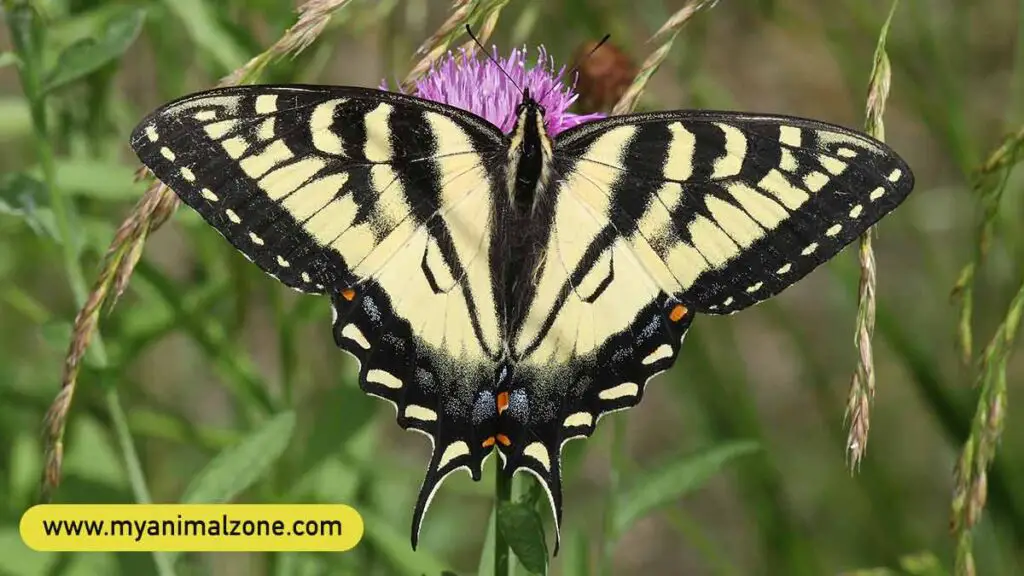
The Canadian tiger swallowtail is a medium to large yellow and black butterfly. The species is found in Canada and the bordering areas of the United States.
It gets its name from the tiger-like stripes on its wings. They live in wooded areas and forest edges near streams. Host plants for the Canadian tiger swallowtail include ash, Birch, black cherry, and willow.
Crowned Slaty Flycatchers
Scientific Name: Griseotyrannus aurantioatrocristatus
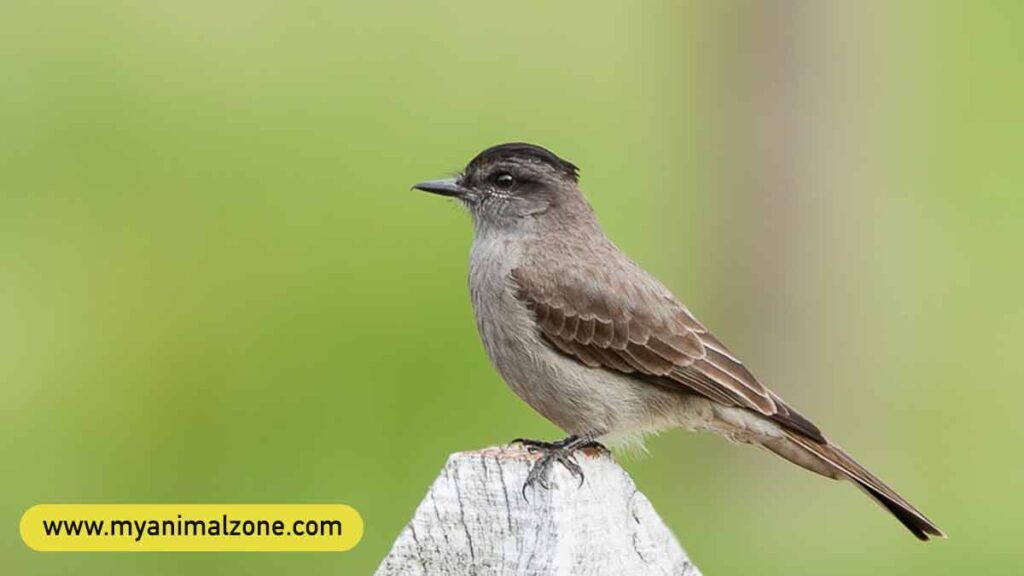
Crowned slaty flycatchers are small insect-eating birds. This bird has one of the longest scientific names in the animal kingdom. The common name is 23 letters long.
The crowned slaty flycatcher gets its name from the black crown on its head. They have dark gray plumage with a pale yellow breast and belly. The head is black with a white eyebrow and crest. They grow about 7 inches long and are brown and gray.
These birds are migratory birds native to South America but also found in North America. Crowned slaty flycatchers inhabit various forest habitats, including humid lowland forests, subtropical montane forests, and Andean cloud forests.
Eastern Diamondback Rattlesnake
Scientific Name: Crotalus adamanteus
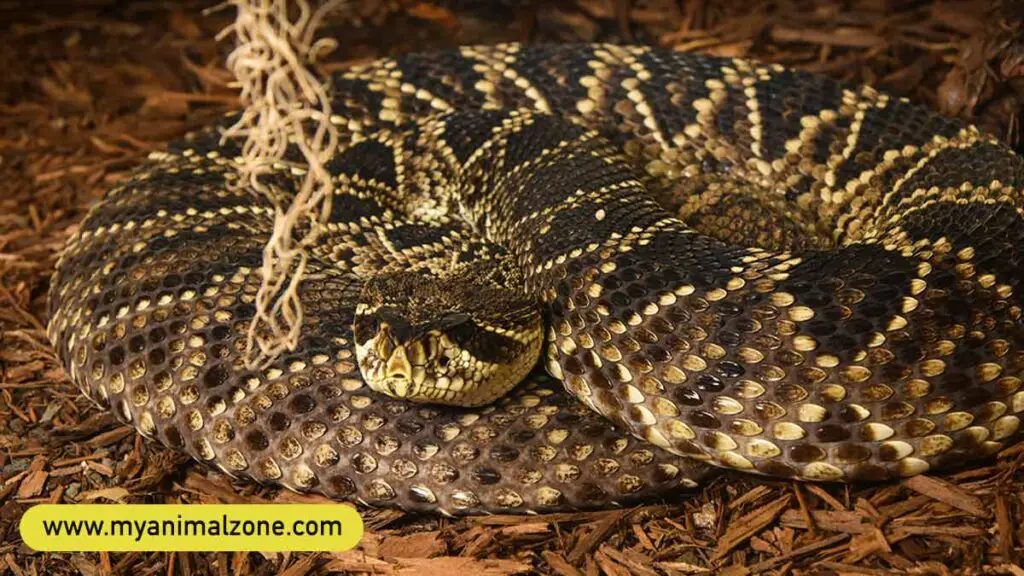
The Eastern diamondback rattlesnake is one of the heaviest venomous snakes in North America. It is also one of the largest rattlesnakes.
The Eastern diamondback rattlesnake is brown, tan, or yellowish, and its back is covered with brown diamonds and surrounded by lighter scales.
It gets its name from the pattern of diamonds on its back. This snake can grow up to 8 feet long and weigh up to 10 pounds. It is found in the southeast United States, from North Carolina to Florida. The Eastern diamondback rattlesnake inhabits woodlands, swamps, and marshes.
Fried Egg Jellyfish
Scientific Name: Phacellophora camtschatica
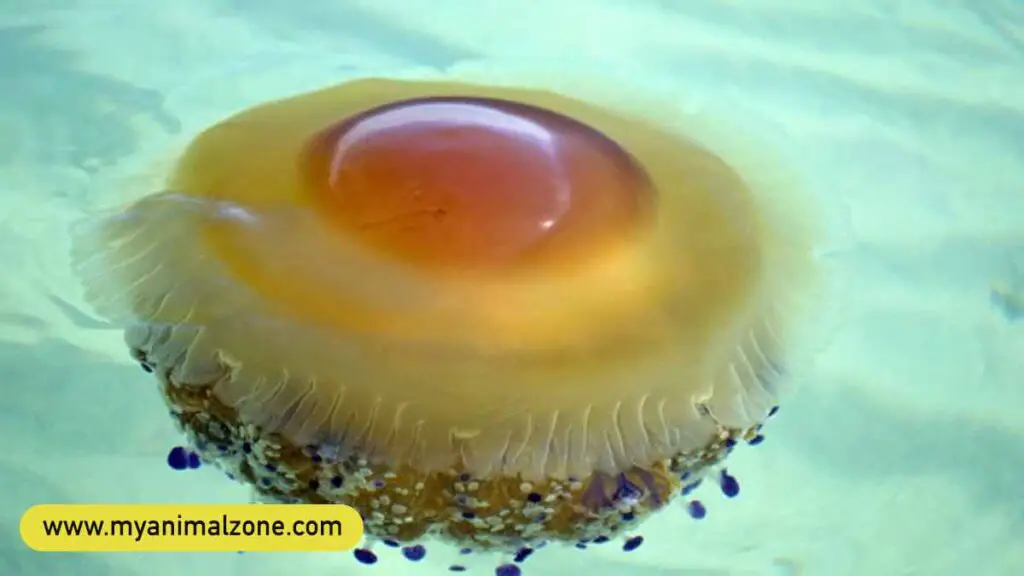
The fried egg jellyfish (also known as egg-yolk jellyfish) is large in the family of Phacellophoridae. The yellow coloration in the center of its body lets you easily identify this species. It closely resembles an egg yolk.
The fried egg jellyfish gets its name from its appearance. It is a large white jellyfish with a yellow center that resembles a fried egg.
This jellyfish can grow up to 24 inches in diameter and weigh up to 1.03 oz. They are found in the Pacific Ocean, from Chile to Alaska.
Frilled-Necked Lizard
Scientific Name: Chlamydosaurus kingii
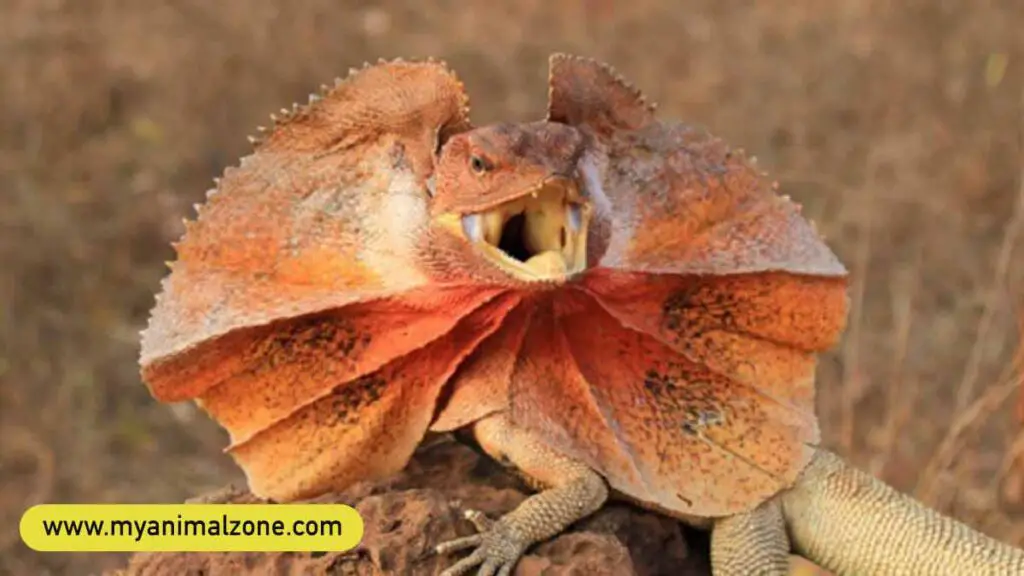
The frilled-necked lizard is a lizard species in the family Agamidae found in northern Australia and southern New Guinea. The frill-necked lizard is also known as the frilled lizard, frilled dragon, or frilled agama.
This name comes from the large frill used for intimidation and protection around its neck. The frill can also help the lizard thermoregulate its body temperature.
The lizard is brown or grayish-brown with dark cross-bands, and the frill is usually colored red, orange, or yellow. It can grow up to 3 feet long.
Greater Racket-Tailed Drongo
Scientific Name: Dicrurus paradiseus
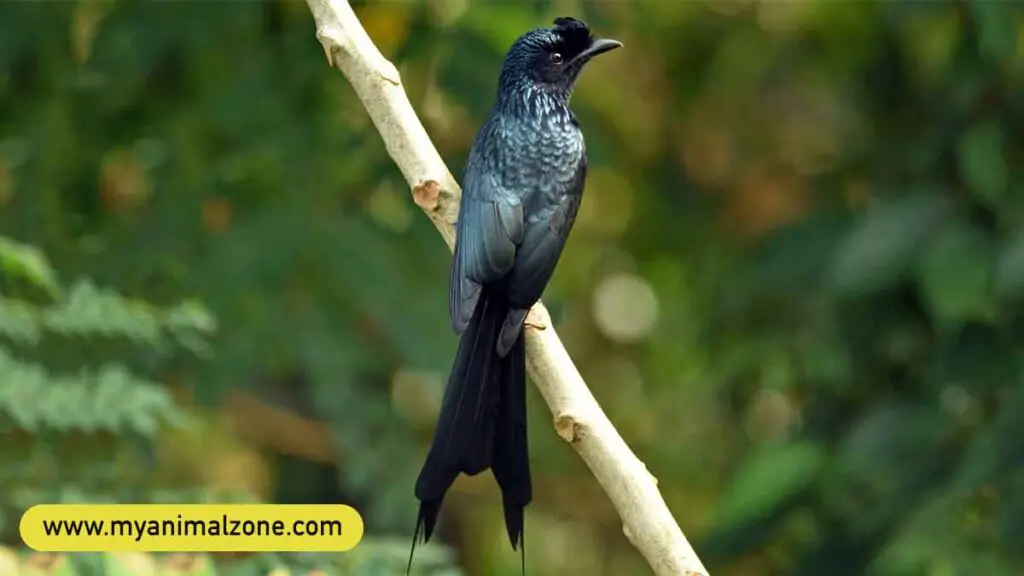
The greater racket-tailed drongo is a medium-sized Asian bird in the family Dicruridae. It is found in forests and woodlands of South and Southeast Asia.
The greater racket-tailed drongo gets its name from the two long projection feathers at the end of its tail. This bird is black with a blue or green sheen.
It has a forked tail and grows between 11.8-25.6 inches in length (30-65 cm), including its long flowing tail. The bird feeds on insects, lizards, and small mammals.
Hummingbird Hawk-Moth
Scientific Name: Macroglossum stellatarum
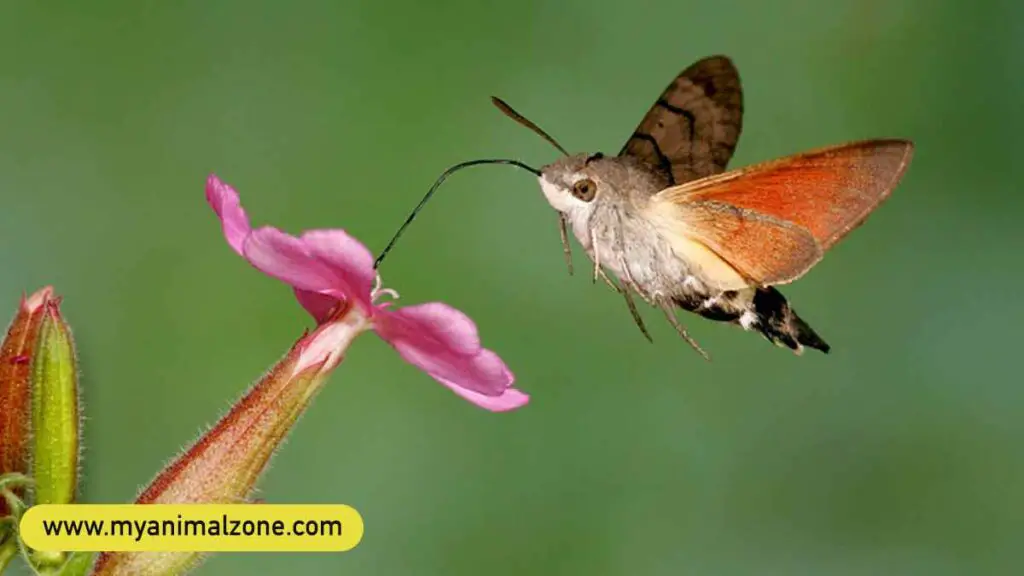
The hummingbird hawk-moth is a moth of the Sphingidae family in Europe, Africa, and Asia. It gets its name from its similarity in appearance and behavior to a hummingbird.
The moth is dark gray or brown with a reddish tinge and has a wingspan of 3-4 inches. The front wings have a white band, and the hind wings have a dark band. The body is slender and long, and the legs are hairy.
The hummingbird hawk-moth hovers around flowers and eats nectar with its long beak. Bright colors attract them, and you can see them in gardens.
Ice Cream Cone Worm
Scientific Name: Pectinariidae
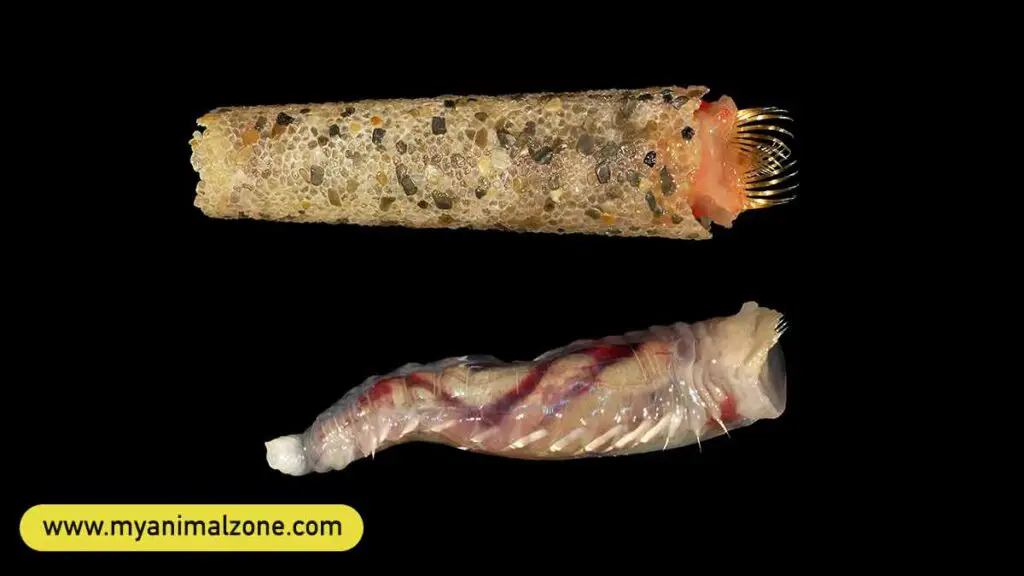
The ice cream cone worm is a type of marine polychaete worm in the family Pectinariidae. They are found in the Atlantic Ocean.
It gets its name from its appearance, which looks like ice cream cone-shaped shells or tubes.
This worm’s body is translucent white, and it has black spots. These aquatic worms grow up to 2 inches long and live inside tubes that they build using tiny grains of sand and shell fragments.
Madagascar Hissing Cockroach
Scientific Name: Gromphadorhina portentosa
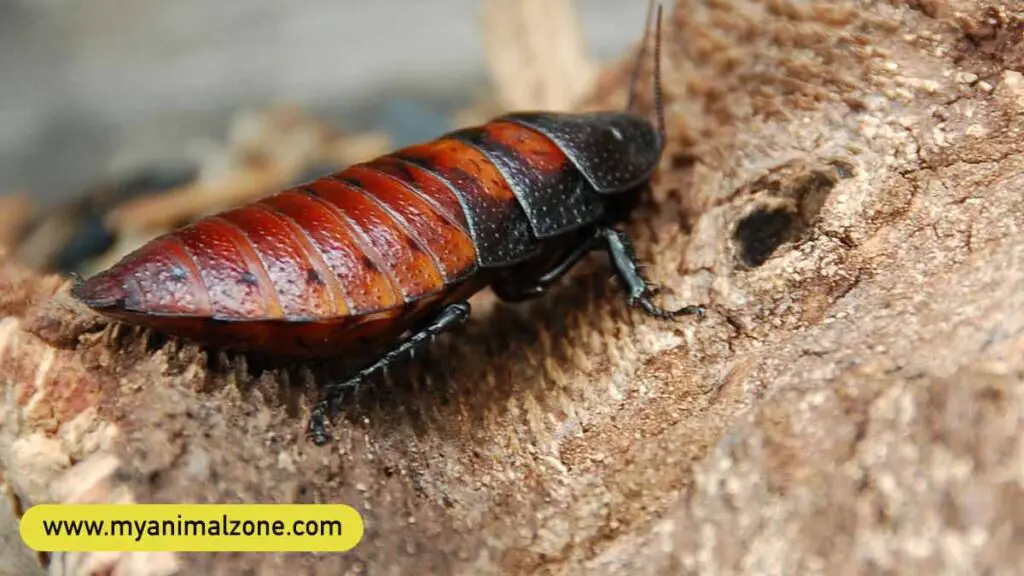
The Madagascar hissing cockroach is one of the largest species of cockroach in the family of Blaberidae. They are native to the island of Madagascar.
The cockroach gets its name from the sound it makes. When it exhales, it makes a hissing noise. It also makes this noise when it feels threatened or scared.
The Madagascar hissing cockroach is black or brown and can grow up to 3 inches long. It is wingless and has long, thin antennae.
Pennsylvania Wood Cockroach
Scientific Name: Parcoblatta pensylvanica
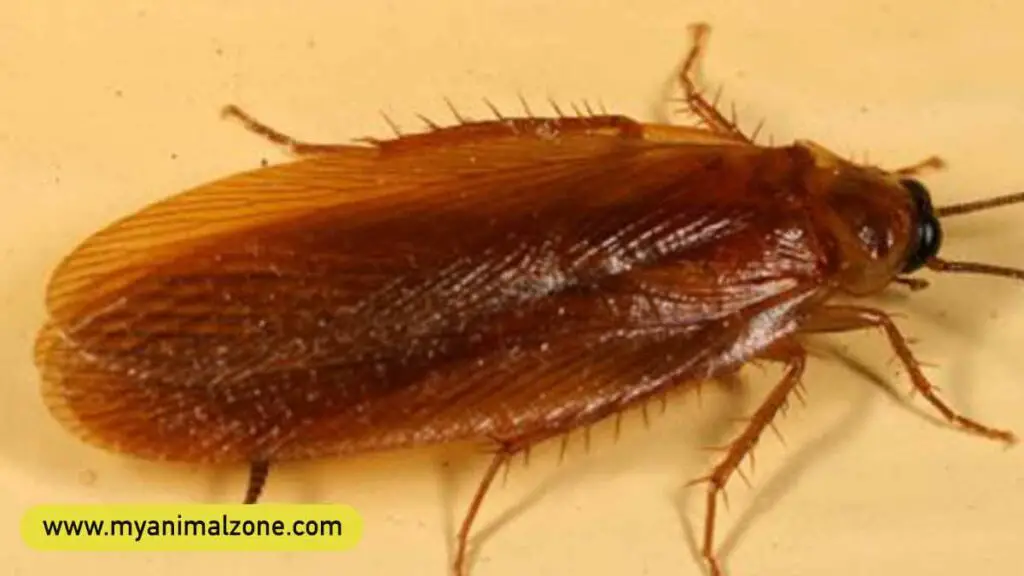
The Pennsylvania wood cockroach is a species of cockroach. It is found in the eastern United States, from Maine to Georgia and central North America.
The roaches are considered occasional nuisance pests in Pennsylvania homes. They feed on decaying organic mats under shingles, garages, firewood piles, and rain gutters.
The Pennsylvania wood cockroach gets its name from the state where it lives and the fact that it typically lives in wooded areas.
This cockroach is dark brown or shiny black. Females grow to about 3/4 inch in length, while males grow to about 1 inch.
Pink Fairy Armadillo
Scientific Name: Chlamyphorus truncates
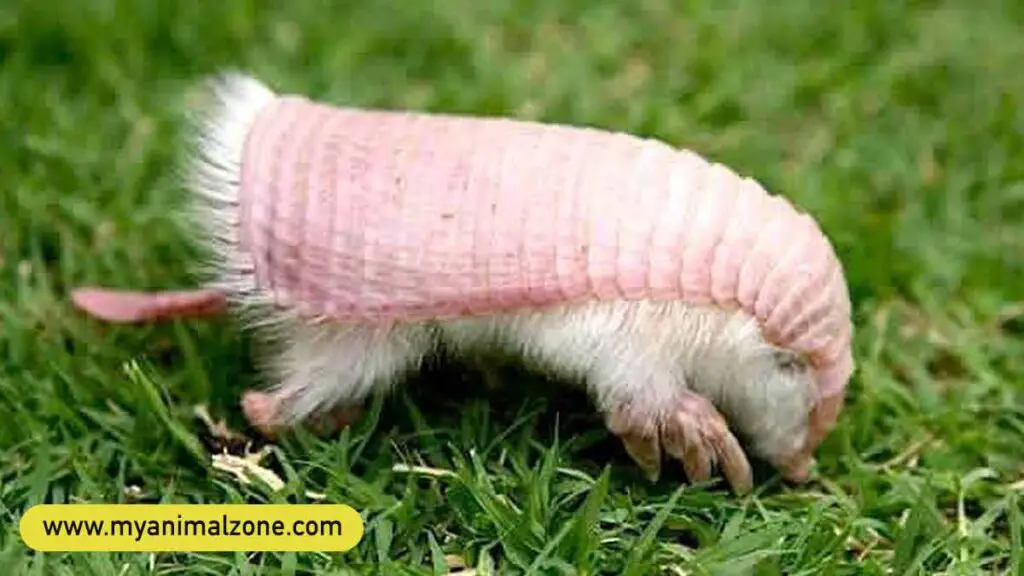
The pink fairy armadillo is a species of armadillo found in central Argentina. It is the smallest species of armadillo and is also one of the rarest.
This animal gets its name due to the rose-pink-colored dorsal shell. The pink fairy armadillo
has a hard shell that covers its back and sides.
The armadillo is nocturnal and burrows underground to avoid the day’s heat. It is only 3-4 inches long and weighs 4-5 ounces.
Pleasing Fungus Beetle
Scientific Name: Erotylidae

The pleasing fungus beetle is a family of beetles containing over 100 genera. Currently, there are six tribes and ten subfamilies. These beetles are found in wooded areas that feed on mold and mildew.
The pleasing fungus beetles get their name from feeding on the fruiting bodies of fungi. Also, they feed on plants, mold, and mildew.
The larvae of these beetles are known to cause damage to stored food products. The adults are oval or round in shape and are often brightly colored.
Rasberry Crazy Ant
Scientific Name: Nylanderia fulva
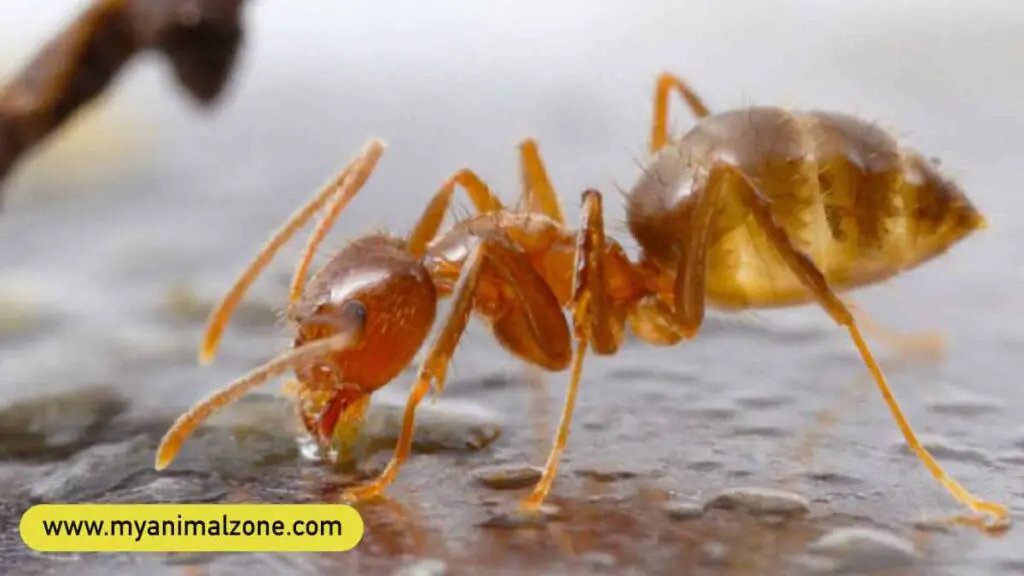
The Rasberry crazy ant or Tawny crazy ant is an invasive species of ant originating in South America. It is named after Tom Rasberry, the Texas exterminator who discovered it in 2002.
The Rasberry crazy ant is reddish-brown or black and about 1/8 inch long. Also, it has tiny hairs on its body.
The ants feed on honeydew, small insects and vertebrates, and plants. Also, they prefer the warm, moist climate of the coast.
Red-Lipped Batfish
Scientific Name: Ogcocephalus darwini
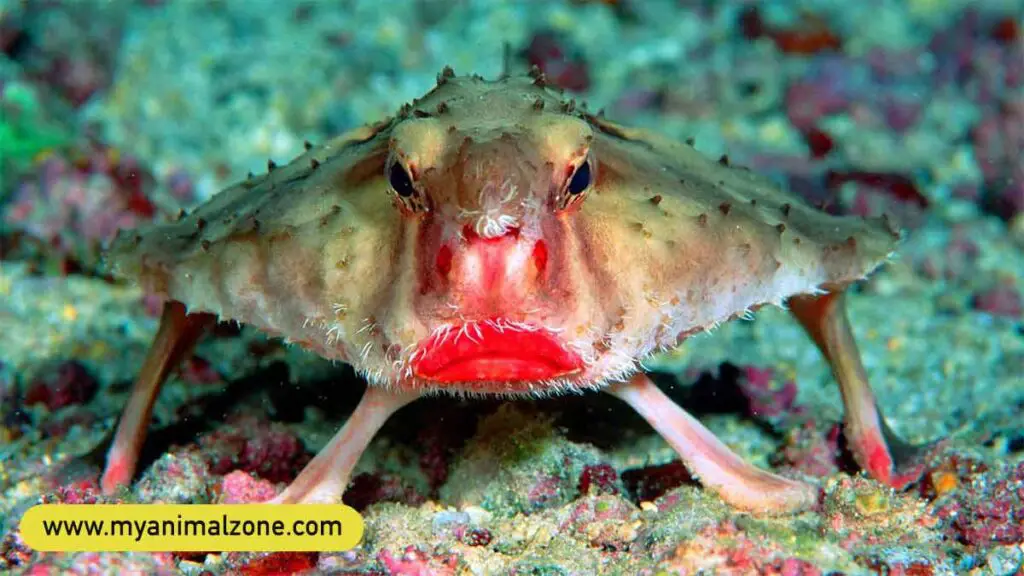
The red-lipped batfish is a species of fish found in the Galapagos Islands. The fish gets its name from its bright red lips.
This fish is black with white spots and can grow up to 16 inches long. It has fins-like legs, which it uses to walk on the ocean floor. The red-lipped batfish is a poor swimmer and uses its pectoral fins to “propel” itself along the bottom.
The fish is found at depths of 10 to 249 feet. It feeds on small crabs, shrimp, worms, and mollusks.
Ruby-Throated Hummingbird
Scientific Name: Archilochus colubris
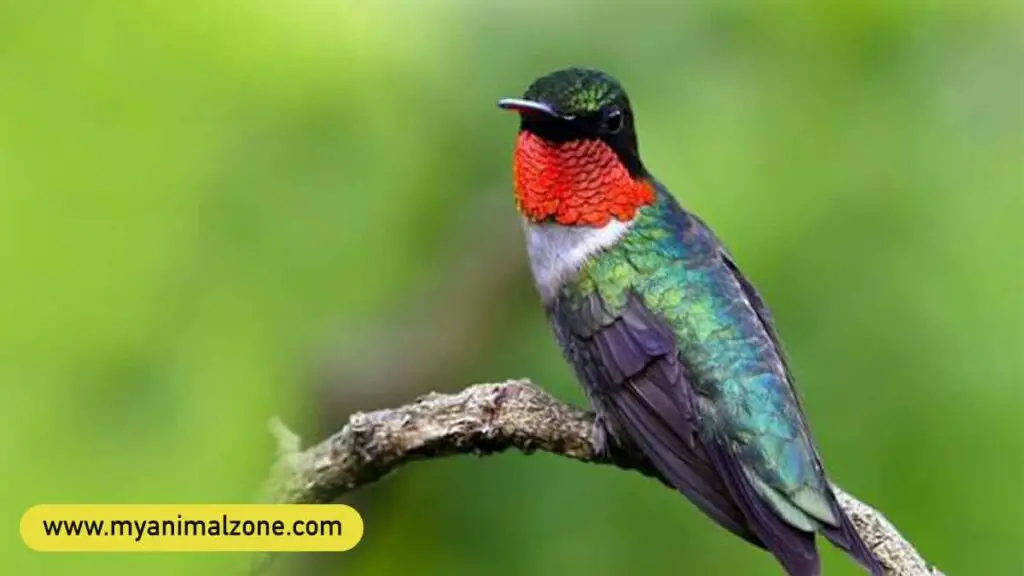
The ruby-throated hummingbird is one of the most common species of hummingbirds found in North America, east of the Mississippi River.
They usually spend winters in woodlands, gardens, and parks in Central America, Mexico, and Florida and migrate to Canada and other parts of eastern North America for the summer to breed.
The bird gets its name from the red throat of the male. In size, the ruby-throated hummingbird measures about three to five inches.
It is primarily green with a white belly. The male has a red throat, and the female has a white throat with a few red streaks.
Screaming Hairy Armadillo
Scientific Name: Chaetophractus vellerosus
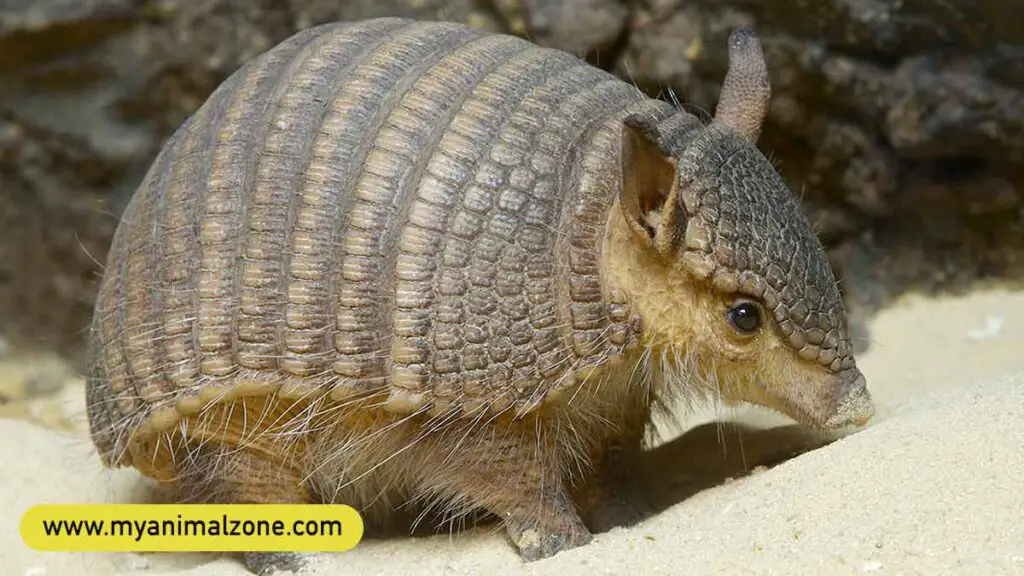
The screaming hairy armadillo is a species of armadillo native to South America. You can find them in Bolivia, Peru, and Argentina.
This armadillo is also known as the small screaming armadillo, crying armadillo, or crying armadillo.
The screaming hairy armadillo gets its name because it screams when it is terrifying and the long, stiff hairs on its body.
It is brown or reddish-brown and hairier than most other armadillo species, with a hard shell covering its back and sides. The screaming hairy armadillo weighs less than 2 pounds.
Southeast Asian Soldiers Fly
Scientific Name: Parastratiosphecomyia stratiosphecomyioides
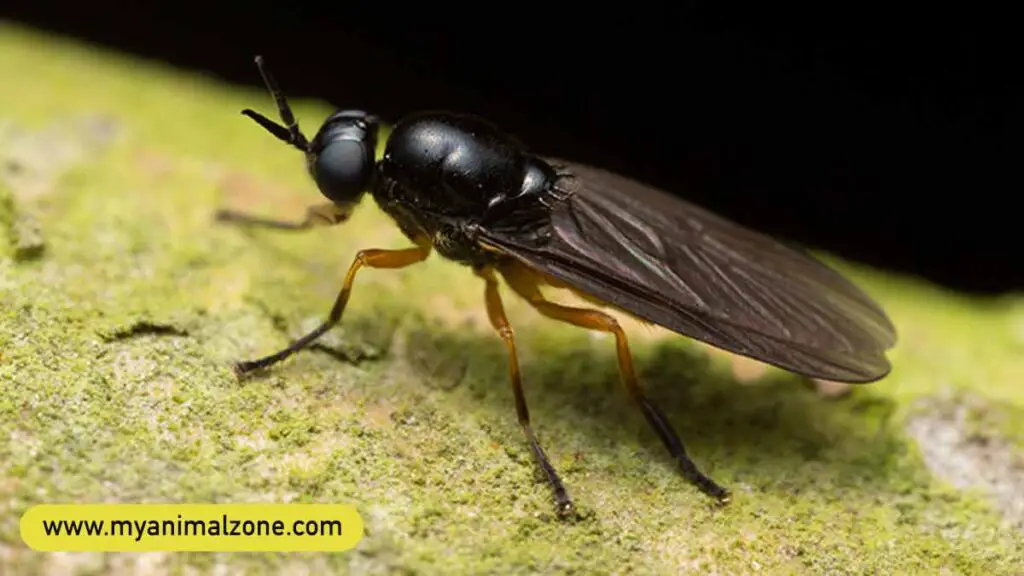
The Southeast Asian soldiers fly is a species of fly in the family Stratiomyidae. This fly is native to Thailand. The scientific name of this species of stratiomyid fly holds the Guinness record for the longest scientific binomial name for an animal.
It gets its nametags from the fact that the larvae of this specie of fly mimic the appearance of soldier ants and lives in Southeast Asia.
The fly is black with yellow stripes and grows about 1/4 inch long. They use their wasp-like appearance to deter predators from eating them.
Southern Titiwangsa Bent-Toed Gecko
Scientific Name: Cyrtodactylus australotitiwangsaensis
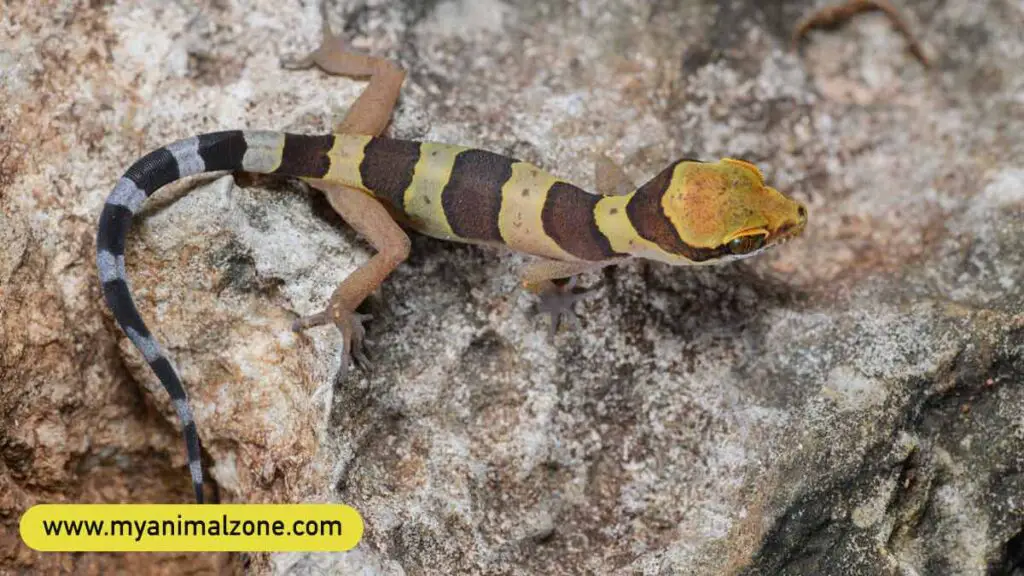
The southern Titiwangsa bent-toed gecko is a species of gecko found in Malaysia. Its scientific name consists of 36 letters, making it one of the longest-named reptiles.
The gecko gets its name because it is found in the Titiwangsa Mountains of southern Malaysia and its bent toes.
There are three or four thick, pale-edged, with dark brown bands on its back. Its tail is often just as long as the body, with six white bands.
Tasselled Wobbegong
Scientific Name: Eucrossorhinus dasypogon
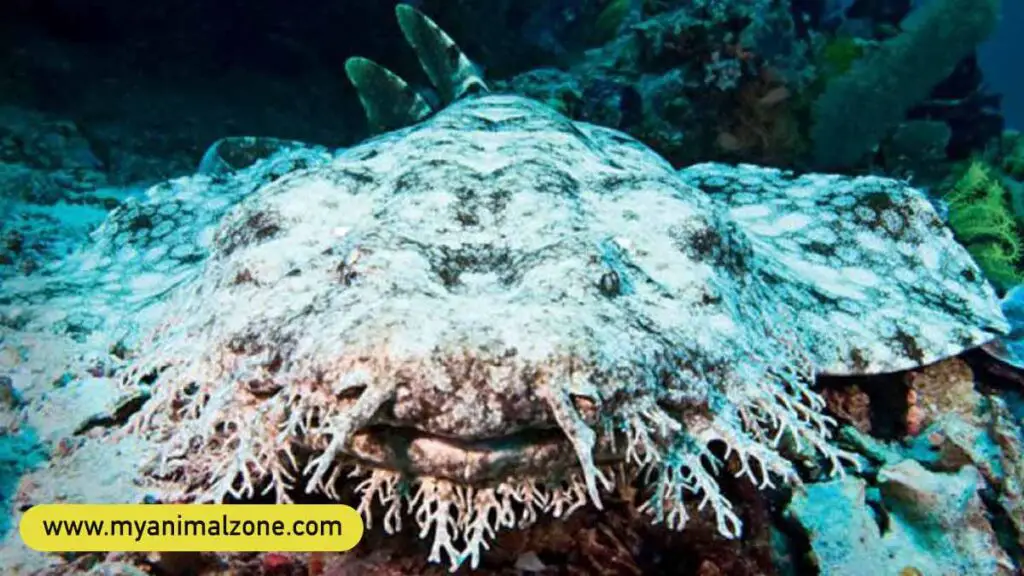
The tasselled wobbegong is a carpet shark found in the southwestern Pacific Ocean. The name comes from the Australian Aboriginal language, which means “shaggy beard,” referring to the growths around the shark’s mouth.
The wobbegong is brown or gray and can grow up to six feet long. It has a vast, flat body and a tail that is shorter than its body. Also, it has long, tasseled barbels on its head.
The carpet shark lives in shallow coastal waters around Australia. It feeds on small fish, crustaceans, and cephalopods.
Western Diamondback Rattlesnake
Scientific Name: Crotalus atrox

The western diamondback rattlesnake is another heavy-bodied snake from a species of a venomous snake, similar in appearance to the Eastern Diamondback Rattlesnake.
The snake gets its name from the diamond-shaped patterns on its back and the rattle at the end of its tail.
It is one of the largest snakes in North America, with some individuals reaching up to 7 feet in length. You can find these snakes in the western United States, Mexico, and parts of Central America.
Some other animals with long names
The following are a few other long name animals with their scientific name:
- Chicken Turtle – Deirochelys reticularia
- Humuhumunukunukuapua’a (Reef-Triggerfish) – Rhinecanthus rectangulus
- Mountain Chicken – Leptodactylus fallax
- Strange Tailed Tyrant – Alectrurus risora
- Blob Fish – Psychrolutes marcidus
Conclusion
There you have it! These are some of the longest scientific names for animals. We hope you enjoyed learning about these amazing creatures and their unique names.
These animals’ names describe their strange appearance, habits, and environment. This can be a great way to learn about different animal species and their characteristics.
However, some scientific names can be quite long and difficult to pronounce. One of the most popular animals with the longest scientific name is Parastratiosphecomyia stratiosphecomyioides (Southeast Asian Soldiers Fly), which contains 43 letters.
Do you know of any other animals that have long scientific names? Let us know in the comments below!




